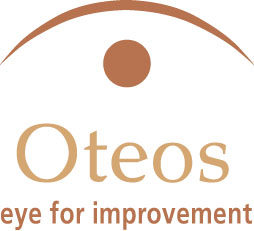What do you do when you identify slack?
The other day I was listening to Craig Groeschel’s podcast about slack amongst leaders in the workplace. He defined slack as anything that doesn’t move us towards our goal. I was surprised by the amount of slack time that the typical leader engages in during an average work week. Now slack can come in multiple forms, including excessively long breaks or lunch hours or excessive visiting or chatting on the work floor. Note that I said excessivevisiting. We know that strong teams are developed more by the connections made out of the workplace than those made at work. That is why some visiting about kids, husbands and lives outside of work is actually good for the team. I have many more thoughts on team building that I will share in later articles.
The stat that really resonated with me was the 3.8 hours a week that leaders spend engaging in mindless activities like scrolling Facebook and Instagram or streaming YouTube. According to Groeschel, this is done to give them a mental break. Think about that – 3.8 hours per week for mental breaks at work. I am in no way saying that mental breaks are not necessary during a workday but what happening that this is adding to the average 20 hours of slack in a week? Or is this a practice that should actually be encouraged?
The Tork poll done in spring of 2018 showed a large disconnect between the management and employee perception of breaks, specifically lunch breaks. Tork showed that management often considered the lunch break when evaluating job performance or view staff that took a regular lunch break as less productive. This despite the evidence that regular breaks, including lunch breaks increase creativity, productivity and focus. A common trend is the 30 minute lunch break. While 30 minutes is enough to inhale a sandwich, is it really long enough to give someone a true break? The hour long lunch not only gives your staff room to breathe but it can discourage poor habits like getting fast food or encourage positive health habits like exercise, meditation or other forms of self-care.
There are many ways that organizations can encourage regular breaks. Yes, you read that correctly – organizations should encourage regular breaks. Mutually important is the body’s need for regular fuel throughout the day and the minds need for intermittent rest. Healthy snacks in a comfortable environment can help decrease the mid-afternoon slump and help your team continue strong until the end of the day.
One easy way to encourage regular breaks is to take a break yourself. I am a firm believer in leading by example. This is something I practiced as a parent and as a leader on the team. Just as we cannot expect our kids to be healthy eaters as we are eating a Big Mac, we cannot expect our staff to take breaks if we don’t practice it ourselves.
Don’t confuse busyness with productivity. When I first started nursing many years ago, we were encouraged by older nurses to look busy. That way the head nurse would not think you were slacking. Of course, today this practice is obsolete – in nursing anyway. Just because staff is not scrolling on their phone does not mean they are being productive. If you notice their focus is absent or weak, it may be time for a break – scheduled or not.
Aside from encouraging regular breaks to encourage mental and physical health, leaders should view slack in the workplace as an opportunity for improvement. Perhaps something has changed within the team, a staff is facing something difficult on the home front or is experiencing poor job satisfaction. Either way, identifying the why behind the slack can be an opportunity to provide support to your team and identify ways to encourage growth.
Even amongst your best employee slack is always going to be present to some degree, it’s how we utilize it that matters. Encourage your team to practice good self-care, take their breaks and lead by example. Do you take your breaks? How do you lead your staff to decrease slack and increase productivity?

Add a Comment